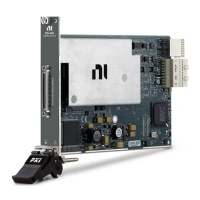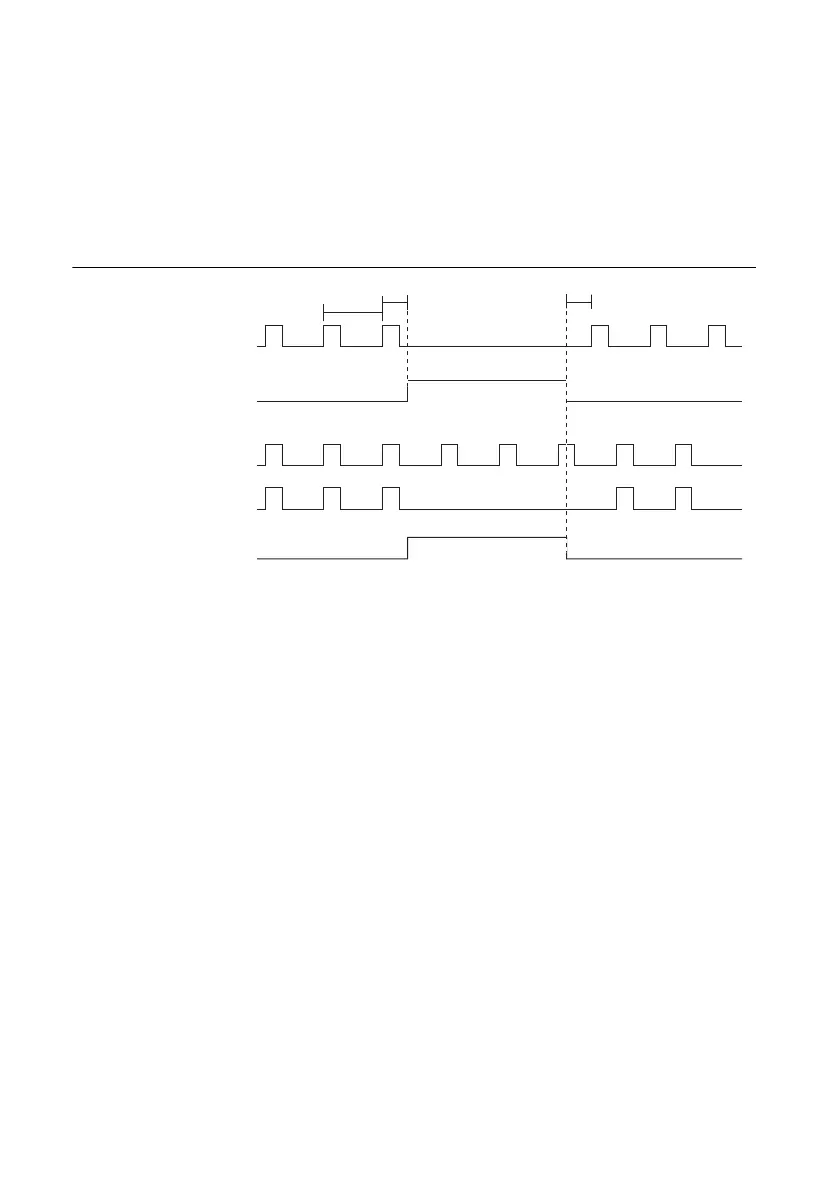6-10 | ni.com
Chapter 6 Digital I/O
DI Pause Trigger Signal
You can use the DI Pause Trigger (di/PauseTrigger) signal to pause and resume a measurement
acquisition. The internal sample clock pauses while the external trigger signal is active and
resumes when the signal is inactive. You can program the active level of the pause trigger to be
high or low, as shown in Figure 6-6. In the figure, T represents the period, and A represents the
unknown time between the clock pulse and the posttrigger.
Figure 6-6. Halt (Internal Clock) and Free Running (External Clock)
Using a Digital Source
To use DI Pause Trigger, specify a source and a polarity. The source can be any of the following
signals:
• PFI <0..15>
•RTSI <0..7>
• PXI_STAR
• PXIe_DSTAR<A,B>
• Counter n Internal Output
• Counter n Gate
• AI Pause Trigger (ai/PauseTrigger)
• AO Pause Trigger (ao/PauseTrigger)
• DO Pause Trigger (do/PauseTrigger)
The source can also be one of several other internal signals on your DAQ device. Refer to Device
Routing in MAX in the NI-DAQmx Help or the LabVIEW Help for more information.
Using an Analog Source
When you use an analog trigger source, the internal sample clock pauses when the Analog
Comparison Event signal is low and resumes when the signal goes high (or vice versa).
DI Sample Clock
DI Pause Trigger
T
A
DI External Sample Clock
DI Pause Trigger
Halt. Used on Internal Clock
Free Running. Used on External Clock
T – A
DI Sample Clock

